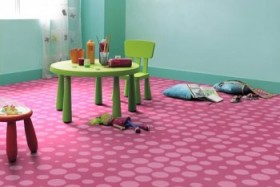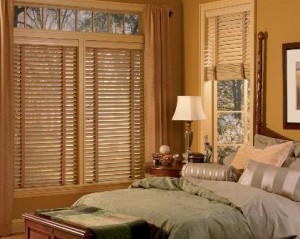Free-standing furnishings
Wednesday, December 31st, 2008 When the baby is very small you may want to use a crib or cradle for him or her to sleep in. These should be abandoned in favour of a cot (which has greater stability) as soon as the child can sit independently - usually at about 5-7 months. A cot should be sturdily built and thoroughly safe, which means making sure that slats are not more than 6 cm (2 3/8 in) apart, that the top rails are an adequate height for protection (i.e. preventing the child falling out even when the side is lowered), that the drop-sides themselves are the sort that cannot be released by a child and that the mattress is firm and a perfect fit so that there are no dangerous gaps between it and the cot sides.
When the baby is very small you may want to use a crib or cradle for him or her to sleep in. These should be abandoned in favour of a cot (which has greater stability) as soon as the child can sit independently - usually at about 5-7 months. A cot should be sturdily built and thoroughly safe, which means making sure that slats are not more than 6 cm (2 3/8 in) apart, that the top rails are an adequate height for protection (i.e. preventing the child falling out even when the side is lowered), that the drop-sides themselves are the sort that cannot be released by a child and that the mattress is firm and a perfect fit so that there are no dangerous gaps between it and the cot sides.
Apart from the crib or cot you’ll need very little furniture. At the infant stage a trolley is a godsend (especially if it has a wheel lock) because it is versatile and moveable. You can wheel it about to have it at your elbow wherever you need it; with a baby on your lap you can’t be leaping up and down for things you’ve forgotten - the furniture has to come to you. Move the trolley by the crib or cot, use it as a stand for a baby bath or scales or general washing kit. Move it into the bathroom at bath time, if that is where you bath the baby. Later it can hold games, a tv, hi-fi, even a computer.
Another useful item at this stage is a cane or old wooden rocker or other nice capacious chair which will last through all the stages and possibly only need re-cushioning occasionally as opposed to recovering. Do choose one which does not constrict your elbows, to make feeding easier.


 Another boon in office awareness is that it’s now OK to admit you’re uncomfortable-and then do something about it. Take, for example, the development of form-fitting,
Another boon in office awareness is that it’s now OK to admit you’re uncomfortable-and then do something about it. Take, for example, the development of form-fitting,  As the personal computer keeps gaining in functionality and performance, it continues to shrink in both size and cost. Affordable
As the personal computer keeps gaining in functionality and performance, it continues to shrink in both size and cost. Affordable  Blinds, shades and shutters are also window treatment options for a bedroom. Blinds come in vertical and horizontal styles and an array of colors, sizes and materials. Louvered blinds can be opened or closed to let in light as desired.
Blinds, shades and shutters are also window treatment options for a bedroom. Blinds come in vertical and horizontal styles and an array of colors, sizes and materials. Louvered blinds can be opened or closed to let in light as desired.